Monday Jun 09, 2025
Monday Jun 09, 2025
Monday, 9 June 2025 00:05 - - {{hitsCtrl.values.hits}}
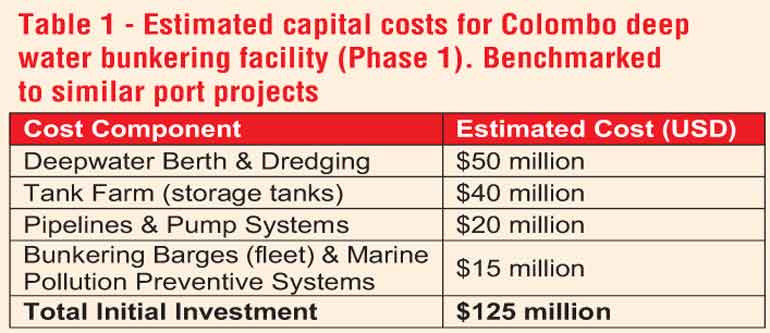
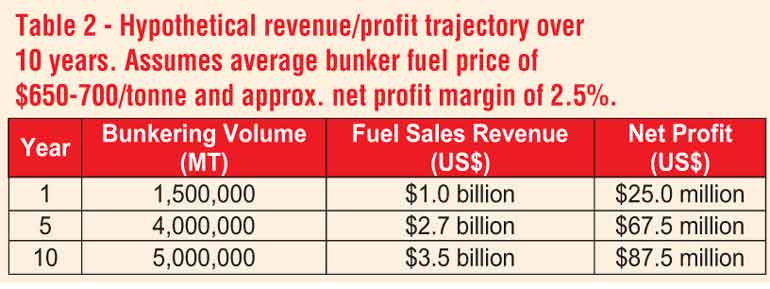

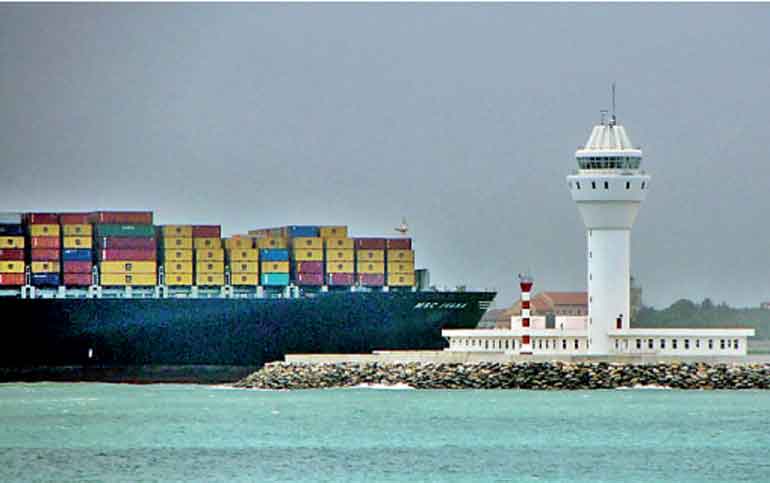

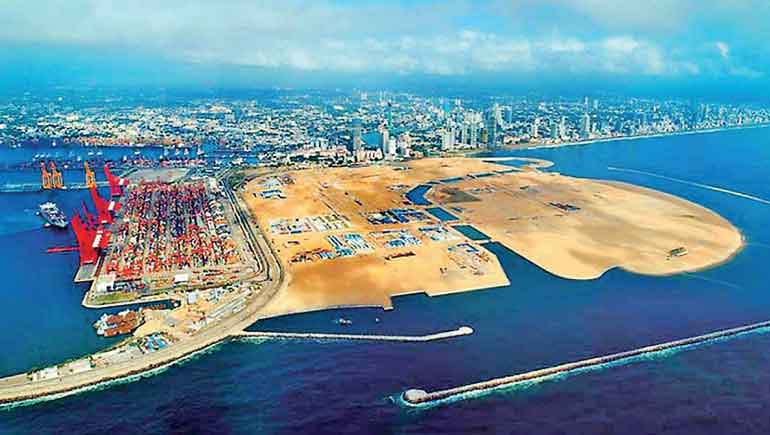
 Introduction
Introduction
The Port of Colombo, Sri Lanka’s busiest harbour, is strategically located on East-West shipping lanes. However, its current bunkering facilities are modest when compared with it’s world ranking. Establishing a deep water bunkering infrastructure at Colombo would allow Very Large Crude Carriers (VLCCs) and Ultra Large Crude Carriers (ULCCs) to call for replenishing stocks. This report evaluates the required infrastructure upgrades, investment costs, timeline, revenue projections, and economic impact of such a project. It also compares outcomes with and without the project and identifies a suitable development zone at the port.
Infrastructure upgrades for bunkering using VLCC/ULCC (Panamax & Aframax)
To accommodate VLCCs/ULCCs and high-throughput fuel operations, Colombo’s port infrastructure must be enhanced:
Benchmark costs and capital investment estimate
Capital costs for a bunkering hub can be substantial. We derive estimates from similar international projects and Colombo’s context:
Using these benchmarks, we estimate the total initial investment around $ 120–150 million for a fully operational deep water bunkering facility at Colombo. This assumes one VLCC-capable berth and a moderate tank farm. A larger multi-berth oil terminal (for simultaneous discharge and loading) could raise costs towards $ 300 million, but the initial phase is likely scaled down. Table 1 summarises the rough cost breakdown.
For context, major oil-terminal projects elsewhere have seen similar scales: the new Kipevu Oil Terminal in Kenya (4 berths including a VLCC berth) cost about $ 385 million, while Oman’s Duqm port recently added a bunker terminal integrated with a refinery (part of a multi-billion project). Colombo’s investment in the ~$100–150M range is reasonable for a first-phase development focusing on one berth and storage, given the Hambantota experience. Notably, Sri Lanka’s Government is already planning to invite private sector to partner and invest into development of two oil berths in the northern part of the Port of Colombo. Hopefully, the limited draft towards the north of Colombo Port shall not constrain the full development potential and optimisation of the opportunity. Therefore, this proposal suggests the Government to consider an alternative area for the development.
As an example, if the Sapugaskanda Oil Refinery Expansion and Modernisation (SOREM) project proposed by the Ceylon Petroleum Corporation (CPC) becomes a reality then it is imperative that a deep water bunkering terminal is established in Colombo for its best outcomes, competitiveness and sustainability. One of the available options is to look at a Single Point Mooring Buoy (SPMB) installed off shore in the Northern end of the Port of Colombo.
Timeline for implementation
Developing the bunkering infrastructure would be executed in phases over the short, medium, and long term:
Milestones: Short-term (years 1–2) would yield project kick-off and ground-breaking; medium-term (year 5) sees the first bunkering operations underway; long-term (beyond year 5) realises full capacity and additional services (e.g. lubricant supply, blended fuels). This phased timeline allows initial revenue generation while scaling up gradually.
Revenue projections (10-year outlook)
Once operational, the deep water bunkering terminal can generate multiple revenue streams: fuel sales, port fees, and ancillary services. Table 2 displays a 10-year projection assuming a conservative ramp-up.
These figures illustrate the potential scale. By year 10, handling 5 million tonnes of bunkers could bring in over 3.5 billion dollars in fuel turnover. Sri Lanka’s Hambantota bunker terminal, after leasing to Sinopec, handled around 600,000 tonnes of bunkers in 2023 – a useful real-world benchmark for Colombo’s ambitions. Colombo could target nearly 10 times volume within a decade, given its greater ship traffic. The profit margins in bunkering are typically thin – global players like World Fuel Services report margins on the order of only $3–5 per tonne. I have assumed $16/tonne in the later years by factoring in value-added services and higher-margin products (e.g. marine gasoil, biofuel and methanol). Even with modest margins, the large volume yields a solid cash flow.
Return on Investment (ROI): If the initial investment is $ 125 million, and by year 10 net profits reach $ 87.5 million/year, the project’s simple payback period would be 4 years. The internal rate of return (IRR) could be on the order of 29-31% over 20 years (assuming volumes continue to grow beyond year 10). More optimistic scenarios (higher regional demand or higher margins) could improve ROI, while risks (under-utilisation or oil price volatility) could lower it. One mitigation is leasing the facility to experienced operators (as done with Hambantota’s bunkering leased to Sinopec) to ensure high utilisation and steady rent/royalty income for the port regardless of fuel price swings.
In addition to direct fuel sales, Colombo Port Authority would earn ancillary revenues: berth fees from tankers, wharfage on fuel, and services (water, sludge disposal, etc.) for ships calling to bunker. These add to the ROI indirectly. Overall, the 10-year outlook suggests the project can be financially viable, with cash flows ramping up in the mid-term and a respectable ROI in the long run, provided Colombo captures a share of the regional bunker market.
Economic impact: With vs. without the project
Investing in a deep water bunkering terminal would have significant economic implications for Sri Lanka. Below we compare scenarios:
With deepwater bunkering project:
Without the project:
In summary, the economic outcome with the project is far superior: higher port revenue, improved balance of trade (by servicing foreign ships), and multiplier effects on the economy. Sri Lanka could become a premier bunker supplier in South Asia, an official goal noted by the Ports Authority (Sri Lanka: Ports as a Premier Bunker Oil Supplier). Without it, Colombo risks ceding the bunker market to competitors and remains vulnerable to regional competition. Furthermore, the government’s plan to expand and modernise the Sapugaskanda oil refinery (SOREM project) shall not bring the best outcomes, once again.
Impact on bunker fuel pricing
Price gap narrows from $50+ to <$10, making Colombo competitive. Allows Sri Lanka to hedge, import in bulk, and reduce buyer costs.
Development zone selection and layout
After evaluating Colombo’s geography, the ideal zone for the bunkering hub is the southwestern side of the port, leveraging the newly reclaimed land of Colombo Port City. This area (269 ha of reclaimed land adjacent to the main harbour) provides ample space for tanks and is directly accessible from the deep water entrance channel. Key advantages of the site include: proximity to deep water (for VLCC berthing along the new breakwater) and isolation from main container terminals (for safety and to avoid traffic conflict).
A bunkering berth could be created seaward of this breakwater or alongside it, where deep drafts are naturally available. The tank farm would lie just behind, on land that is currently underutilised (Port City’s developmental zone). This positioning ensures bunkering operations have direct sea access and ample safety buffer, while remaining within port limits. Additionally, the northern waterfront of Colombo (around Bloemendhal or the existing oil jetties) was considered, but space constraints and shallower depth make it less optimal than the Port City zone.
Conclusion
Developing deep water bunkering at Colombo Port is feasible and economically compelling. The required upgrades – though capital-intensive – draw on proven models from other ports. An investment on the order of $ 125+ million could be recouped through steady growth in bunker sales, especially given Colombo’s strategic location on global shipping lanes. Over a 10-year horizon, the project can transform Colombo from purely a container hub into a dual hub of containers and fuel, with millions of dollars in new revenue and a stronger competitive position.
Crucially, the comparison of scenarios shows that not pursuing this project carries a high opportunity cost. With regional competitors like Singapore, Fujairah, and even Hambantota capturing bunker markets, Colombo cannot afford to lag if it aspires to be a leading Indian Ocean maritime centre. By investing in a state-of-the-art bunkering facility (potentially via public-private partnership to mitigate state burden), Sri Lanka stands to gain long-term economic dividends and improve energy security. The Port City development provides an ideal platform to integrate this new oil terminal in a way that complements Colombo’s expansion. Otherwise, the available option is to look at a Single Point Mooring Buoy (SPMB) installed off shore in the northern end of the Port of Colombo due to the limited draft.
In conclusion, establishing deep water bunkering infrastructure at Colombo is a forward-looking move. It is a technically feasible endeavour with manageable investment needs (supported by analogous projects’ data) and offers a favourable ROI when considering not just direct profits but also wider economic multipliers. With phased execution and strategic partnerships, Colombo can realistically become a regional bunkering hub, elevating its port into a more diversified and resilient economic asset for Sri Lanka.
References and sources:
(The writer is a former Chairman of Ceylon Shipping Corporation, Director of Ceylon Petroleum Corporation and Vice Chairman of Civil Aviation Authority. Currently holding Board positions in several local and overseas companies.)
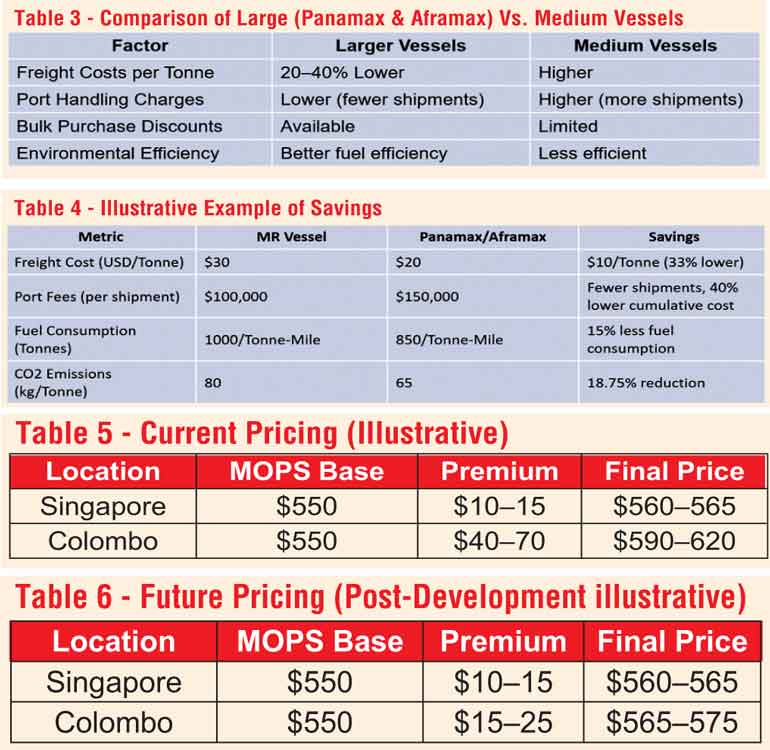
Discover Kapruka, the leading online shopping platform in Sri Lanka, where you can conveniently send Gifts and Flowers to your loved ones for any event including Valentine ’s Day. Explore a wide range of popular Shopping Categories on Kapruka, including Toys, Groceries, Electronics, Birthday Cakes, Fruits, Chocolates, Flower Bouquets, Clothing, Watches, Lingerie, Gift Sets and Jewellery. Also if you’re interested in selling with Kapruka, Partner Central by Kapruka is the best solution to start with. Moreover, through Kapruka Global Shop, you can also enjoy the convenience of purchasing products from renowned platforms like Amazon and eBay and have them delivered to Sri Lanka.
Discover Kapruka, the leading online shopping platform in Sri Lanka, where you can conveniently send Gifts and Flowers to your loved ones for any event including Valentine ’s Day. Explore a wide range of popular Shopping Categories on Kapruka, including Toys, Groceries, Electronics, Birthday Cakes, Fruits, Chocolates, Flower Bouquets, Clothing, Watches, Lingerie, Gift Sets and Jewellery. Also if you’re interested in selling with Kapruka, Partner Central by Kapruka is the best solution to start with. Moreover, through Kapruka Global Shop, you can also enjoy the convenience of purchasing products from renowned platforms like Amazon and eBay and have them delivered to Sri Lanka.